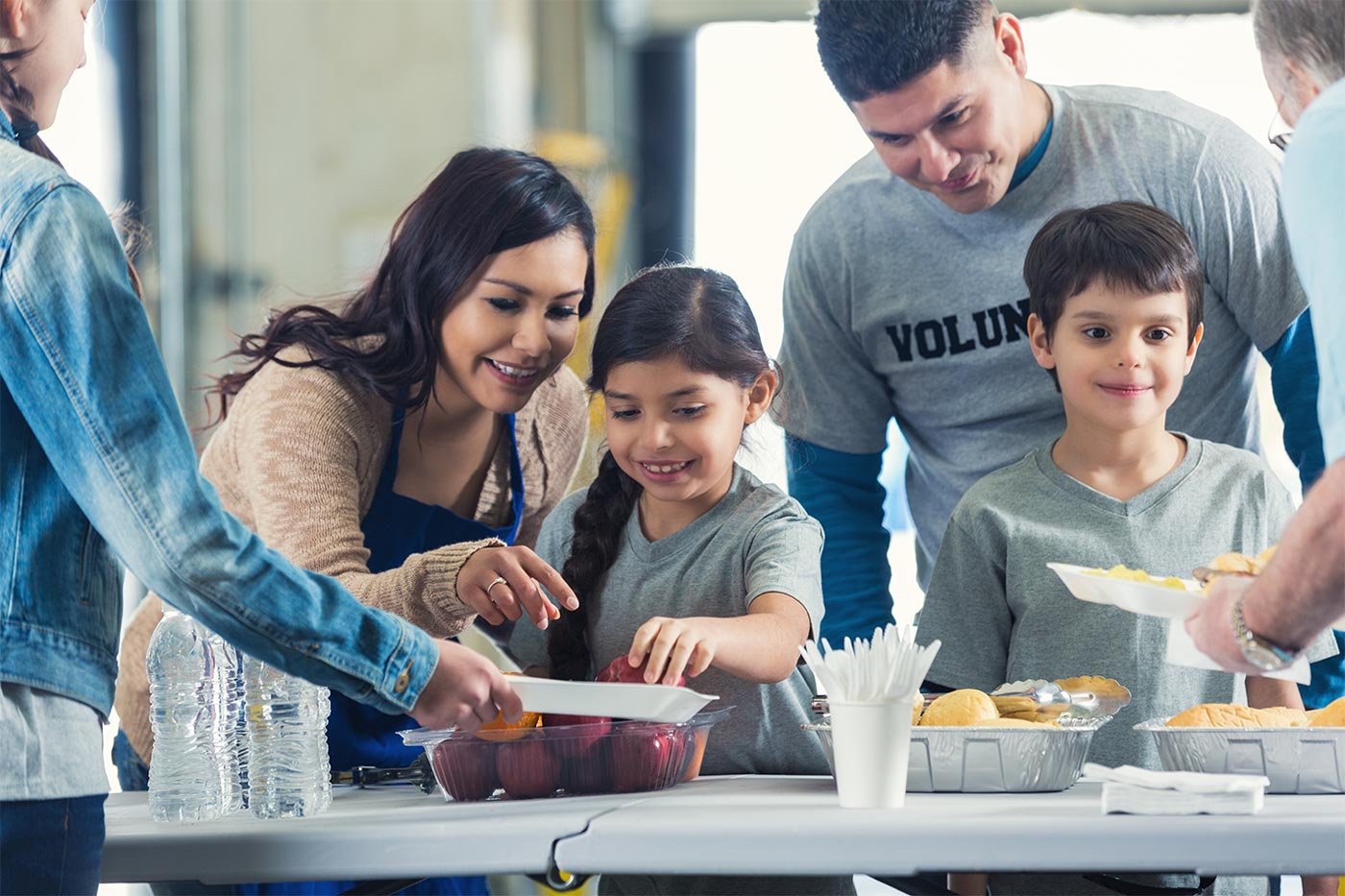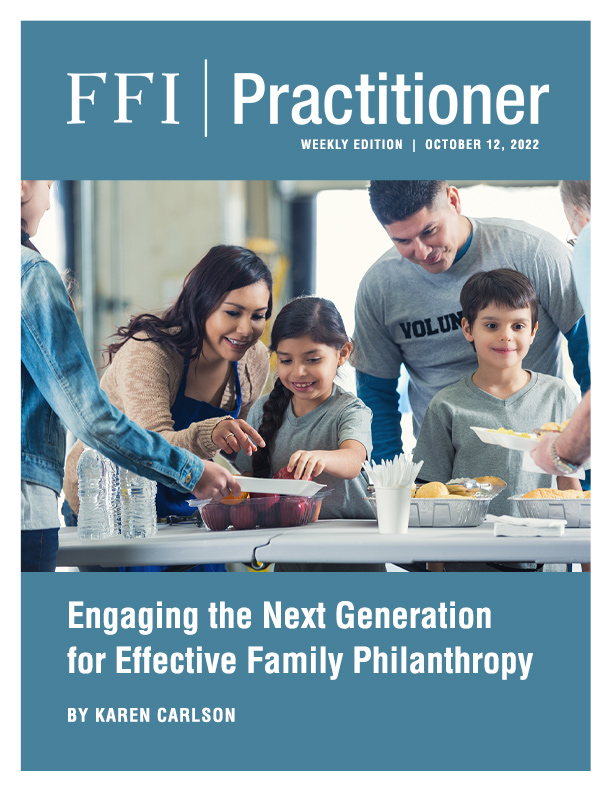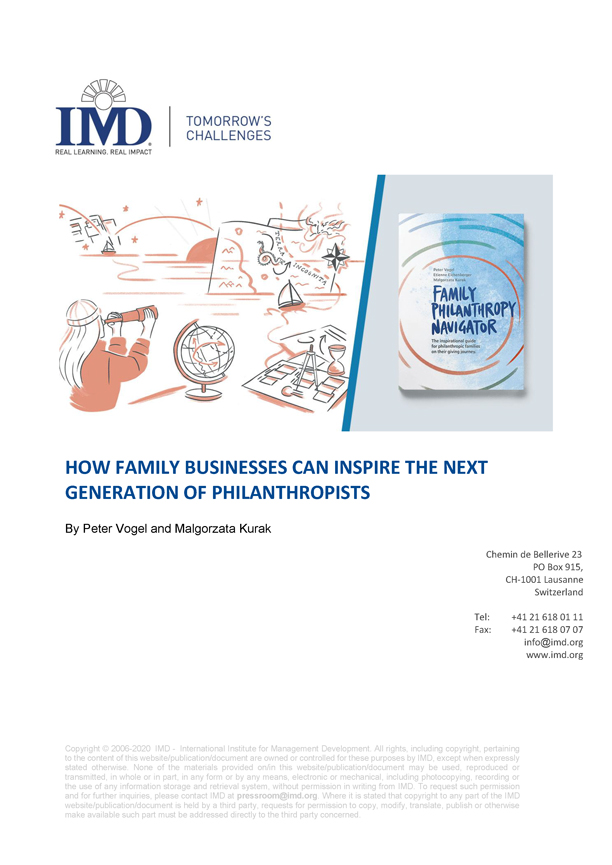
These best practices for next-gen philanthropy can help build a stronger base to support a family’s giving legacy far into the future.
Educate the Youngest Generation
Even before they can correctly pronounce “phil-an-thro-py,” next-gen children can participate in the family’s endeavors. It starts with education.
For example, let’s say a family enterprise client gives to the local zoo. During a family meeting, an advisor might recommend that the family spend time with the youngest generation talking to them about how much it costs to feed and care for their favorite animals and explaining how the family’s contributions help to meet those needs.
Another option for a family meeting is to ask the next-gen children what problems they have observed in their community. Then, let them brainstorm various ways to help and facilitate a discussion about how the family could contribute to a solution.
Encouraging young next-gen family members to notice others’ needs and assess how to meet them can help to instill a strong philanthropic mindset.


Respect Personal Passions
To keep children, adolescents, and young adults engaged, encourage family enterprise clients to carve out space for them to pursue their own philanthropic passions. A family giving initiative will be more likely to succeed if the next generation enjoys participating and feels it can make a difference—not just follow a previous generation’s practices.
If a client family supports a local children’s hospital, it may increase their teenagers’ interest in getting involved if they learn about the different types of patients the hospital serves, find a way to identify with them, and come up with their own ideas for how to help. If a son is an artist, maybe he can lead a painting workshop. If a daughter is interested in medicine, the family could discuss how she can explore that interest while working with the family to further the hospital’s mission.
Establish Flexible Structures
One of the best ways to encourage next-gen participation in family philanthropy is through a flexible giving structure. Whether a family has a charitable trust, donor advised fund, or private foundation, allocating funds to different causes and allowing family members to direct contributions can help everyone find a personally meaningful way to contribute.
For example, an advisor might recommend that the family decide collectively how to allocate the majority of a year’s total giving but also carve out a certain percentage to be directed by individual family members—without having to ask permission or seek approval.
Sidebar
Peter Vogel and Malgorzata Kurak explain how storytelling can help to engage next generation family members in family philanthropy and explain the family’s giving strategy.
Encourage Positive Communication Among Family Members
Even if families have total freedom to direct a portion of their family’s giving, they can remain accountable for their choices and learn about each other’s interests. For example, if a family lets the eldest daughter decide where a portion of the giving goes, she could be encouraged to make a presentation to the family on why she chose to support that cause, how the family might contribute its time, talent and treasure, and the anticipated impact of the contribution.
This practice can help the different generations communicate with and learn from one another. Older generations can feel energized by learning about new giving opportunities as well as their children or grandchildren’s passions.
Younger generations can discover or be reminded of where their values intersect with those of their elders. At the same time, they can enjoy the freedom to express themselves through their giving while developing decision-making and presentation skills in a low stakes familial setting. In this way, family philanthropy can serve as a training ground for learning about the value of money, governance, and leadership.

Design Flexibility for the Evolution of Giving
It is difficult to predict what societal challenges future generations will want to address through charitable giving. Family values can be influenced by the experiences and priorities of individual family members, as well as the environment in which the family lives.
Still, a family’s core values tend to stay aligned across generations. The most successful philanthropic ventures should anticipate the need to evolve while honoring what came before them.
A family might, for example, set up a charitable giving vehicle to support more than one type of cause or category, but allow each successive generation to vote on changing up to two of those categories. That way, younger generations stay connected to the giving goals of prior generations, but they also do not feel beholden to a cause they may no longer support—or that lacks the urgency it once did for the family.
Advisors can help to establish periodic times to review the charitable objectives to confirm whether they still resonate for the family or need to be reevaluated. It is important to foster an environment of intergenerational family decision-making that is collaborative and not adversarial.


The Role of Family Advisors
Business-owning families may feel unsure about how to best engage and educate the next generation on philanthropic issues. Trusted family advisors can play a key role by working with a family to discover and implement its giving, including shining a spotlight on ways the next generation can contribute to the family’s giving legacy. Family advisors can help identify and build upon a family’s strengths, help the family focus its efforts and create entry points for the next gen. Advisors may also be able to help by designing appropriate governance structures and policies, or by working with the family to navigate complex family dynamics that might arise, especially when the voices of multiple generations are vying to be heard.
Final Thoughts
Increased life expectancy means it can now be common for three or four generations to simultaneously contribute to a family’s charitable endeavors. Failing to engage the youngest family members ignores a valuable family asset and can decrease the likelihood of a smooth transition when senior family members eventually hand over philanthropic leadership and the younger family members are ill-equipped to fill their shoes.
Advisors can help families engage young next-gen members in family giving in ways they find personally meaningful. By the time they are old enough to take a more active role in guiding the family’s philanthropic decision making, they are then better equipped to continue their family’s legacy while making their own mark.





